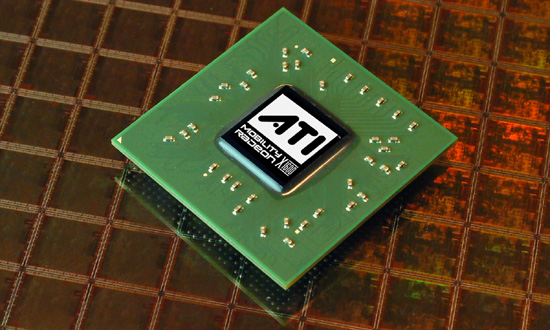ATI Mobility Radeon X1600 GPU Preview
ATI Introduces the X1K family to mobile users

It’s about time that ATI powered laptops got an upgrade in graphics area and ATI has aimed their attack at the mainstream performance market to launch their next mobile GPU, the Mobility Radeon X1600. The mobile version of the X1600 shares the same core design as its desktop brethren, but has had the clock frequencies for use in notebooks. The features listed below should look nearly identical to the desktop X1600.
- 90nm X1600 Core
- 12 Pixel Pipes
- 5 Vertex Pipes
- 4 Texture Units
- 4 Render Back-Ends
- 128 Max. Threads
- Core clock: 470MHz (will vary by vendor)
- Memory clock: 940MHz GDDR3 (will vary by vendor)

The X1600 is also first mobile discrete graphics processor featuring ATI?s Avivo technology, which allows for better HD video and display settings. The above image also mentions extended battery life and this is due to ATI’s software program called PowerPlay 6. ATI is still doing Dynamic Lane Count Switching (DLCS), which switches the card between 1x and 16x lanes depending on whether the system is running in AC or battery power. The state of the GPU and its voltage can be dynamically changed via PowerPlay 6 or manually set by enabling the user configurable operation modes. Three modes are present: performance, balanced and battery. ATI informed LR to expect the same power consumption as an ATI Mobility Radeon X700 PCIe solution, so thanks to the die shrink and software improvements battery life should remain the same. This is a good thing seeing how the clock frequencies increased.
The X1K series of mobile GPU’s will also be fully supported by the Catalyst Mobility drivers, which is important for gamers and enthusiasts who want to get the most recent patches for their software applications. The Mobility Radeon X1600 can also H.264 decode, but it is not yet supported in the Catalyst drivers. Enough technical talk! Let’s take a look at the card and then go on to the benchmarks!

Comments are closed.